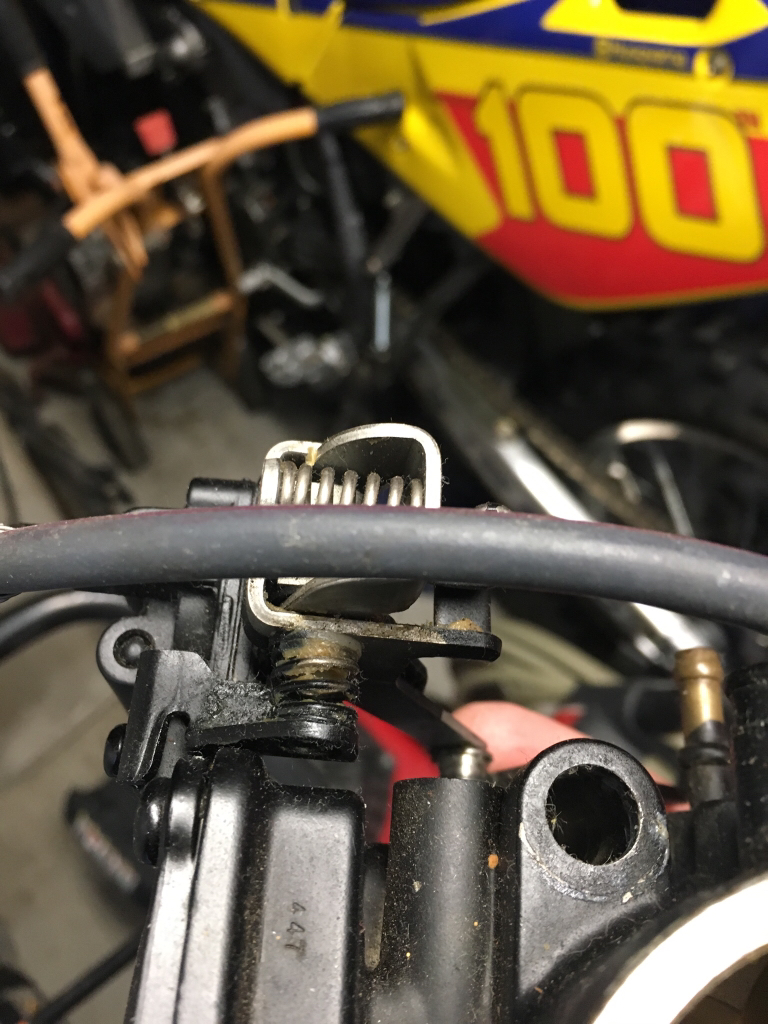I rebuilt my 717 carbs yesterday. they are the type with the accelerator pump.
this thread was fantastic in getting me through.
I thought I would post a few pics that might help the next guy.
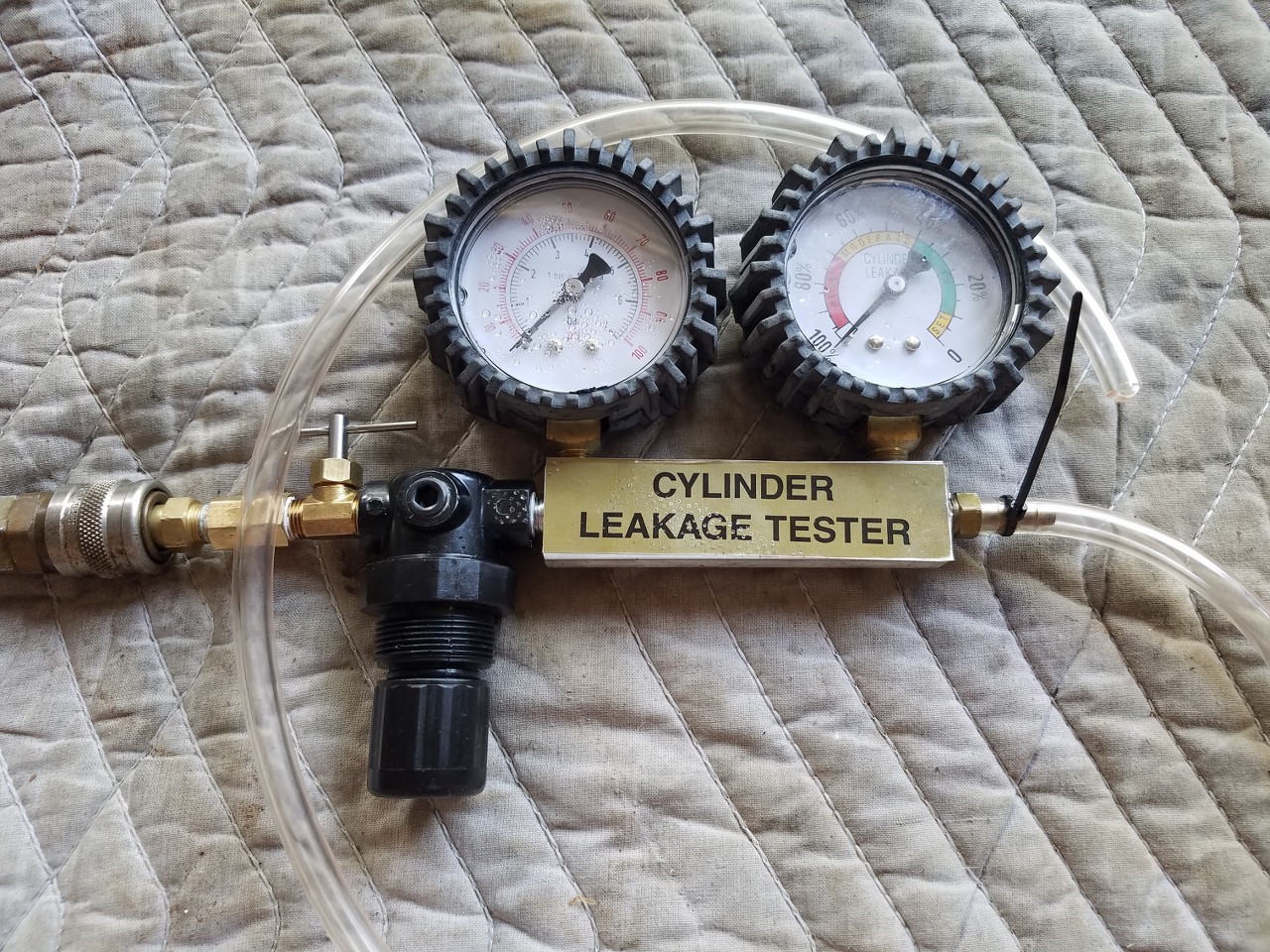
this is the pressure tester I made. it was an automotive leak down tester that I added a couple brass fittings to make it work. I think I spent about 8 dollars on parts. the right gage is superfluous for this purpose, but since I already owned the tool, it was easy to modify for the purpose at hand. on the left side, I bought a coupling and the shutoff valve. on the right, I bought a nipple. the thing I like about it is that I can just plug it into my air compressor and use the regulator to pump it up to whatever pressure I want. depending on the test I am administering, I can use the shut off valve on the left side to hold pressure in the system to check for leaks. by adding a nipple with a 1/8" npt fitting on the end, this tester also works well to pressure check the jet drives.
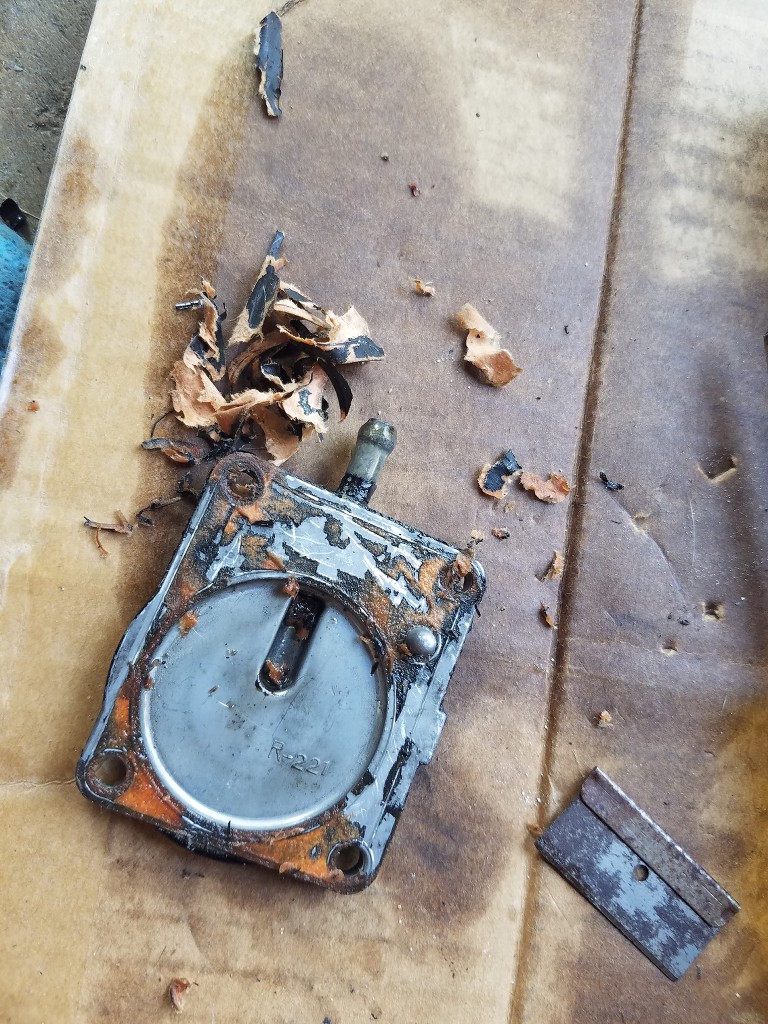
the worst part of the rebuild was removing this gasket. that thing was glued on with reckless abandon. I think it would be preferable to be hung by one's thumbs than spend your days scraping these off. both my carbs were glued on in the same way.
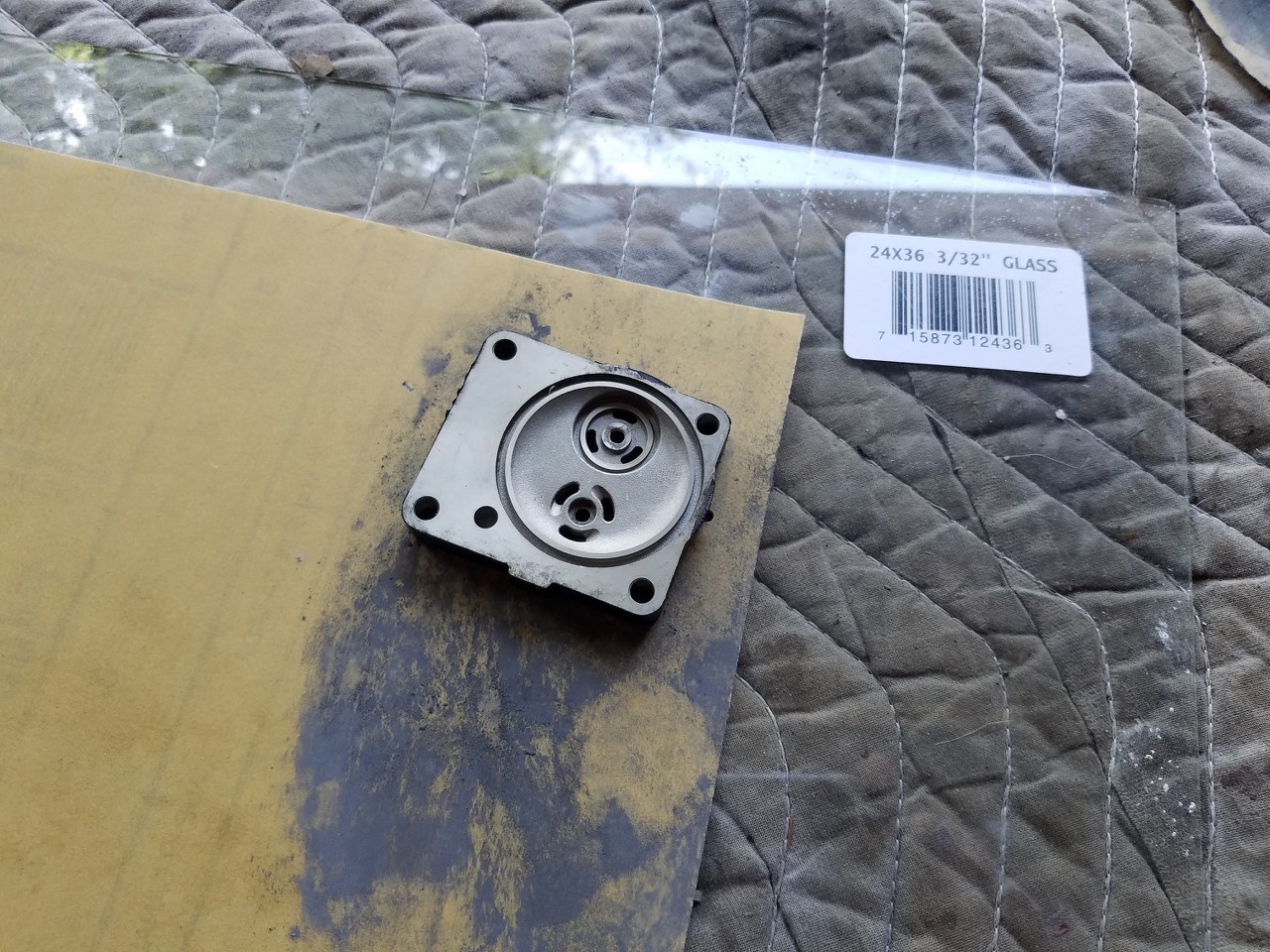
I used 400 grit wet/dry sandpaper set upon a piece of sheet glass to remove the corrosion.
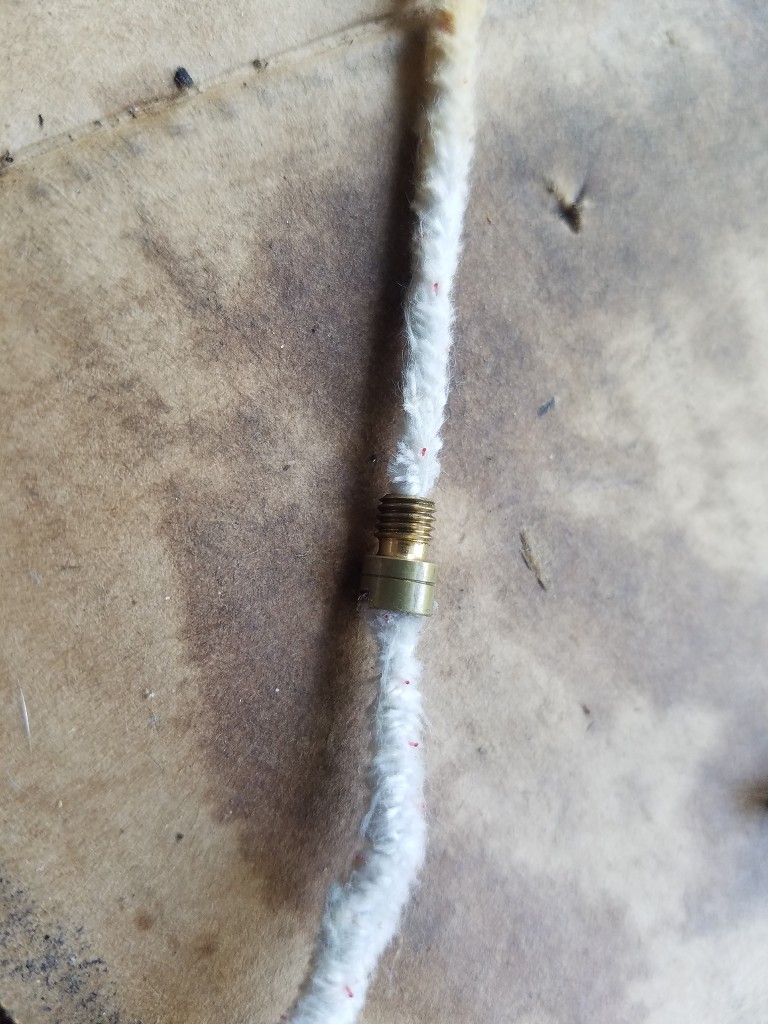
using my pipe cleaners to rod out the larger jet. I used these in several places on the carb body too.
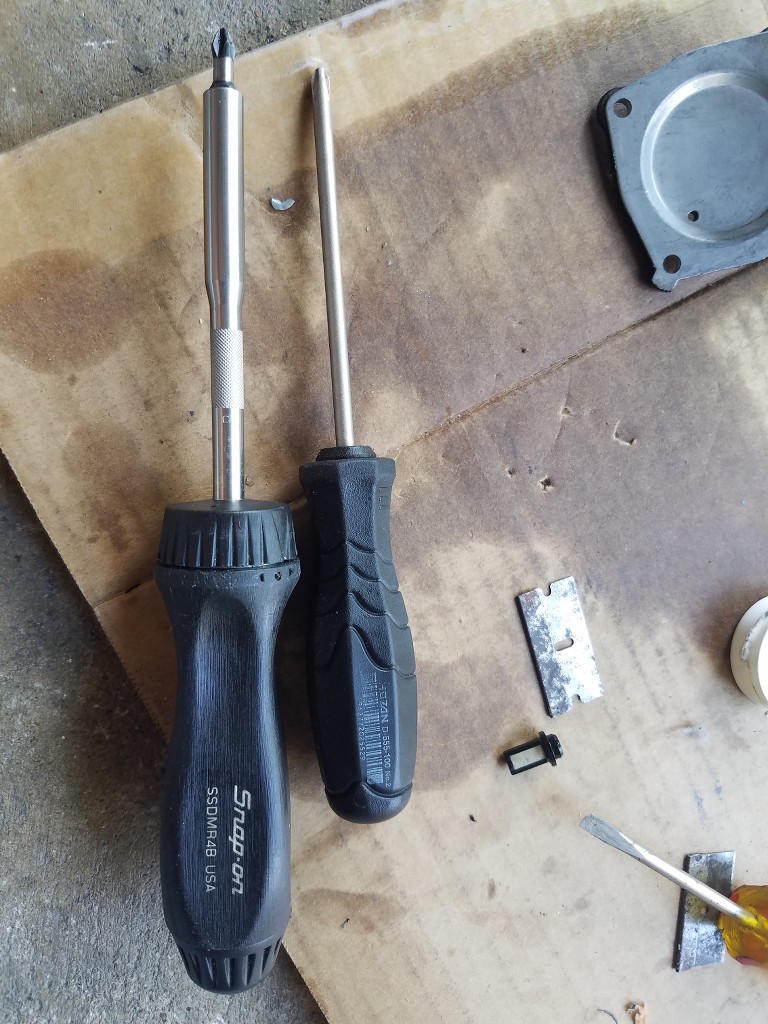
miki recommends using Japanese industrial standard screwdrivers so I purchased a set. I didn't buy the same brand but I honestly wasn't very happy with them. I found my ratcheting snap on with a Milwaukee #2 insert seemed superior. I had a lot better leverage and the bit fit the slot well in all occasions except for a couple of the small screws in the carb body.
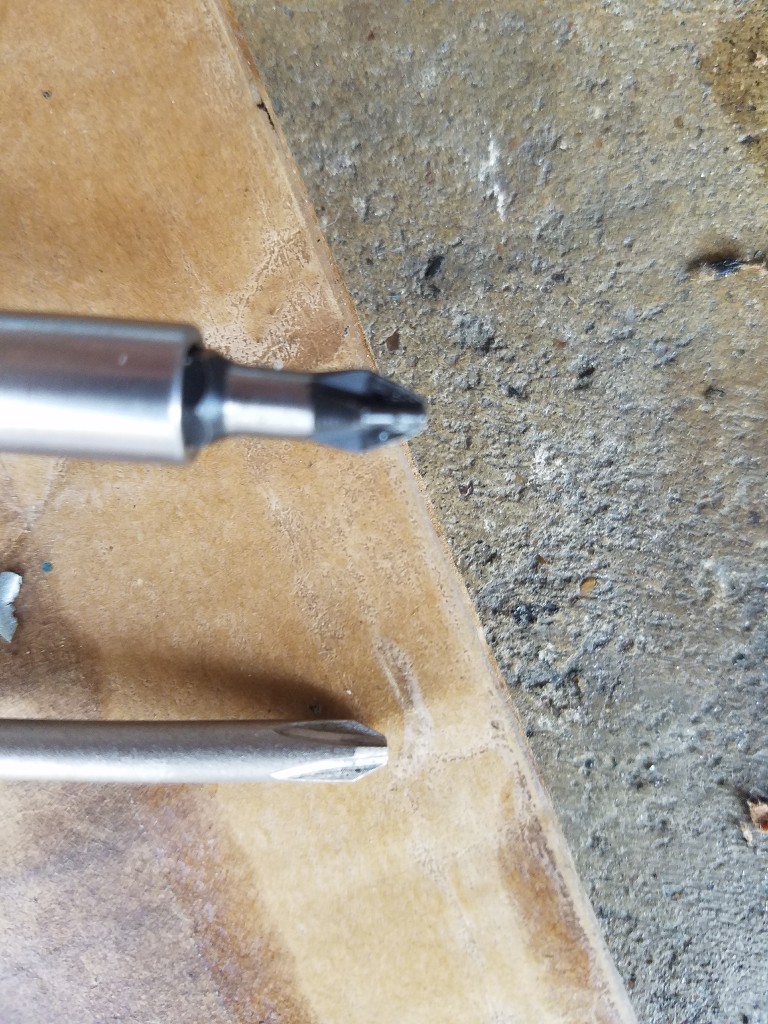
a closeup of the tips and they look pretty similar.
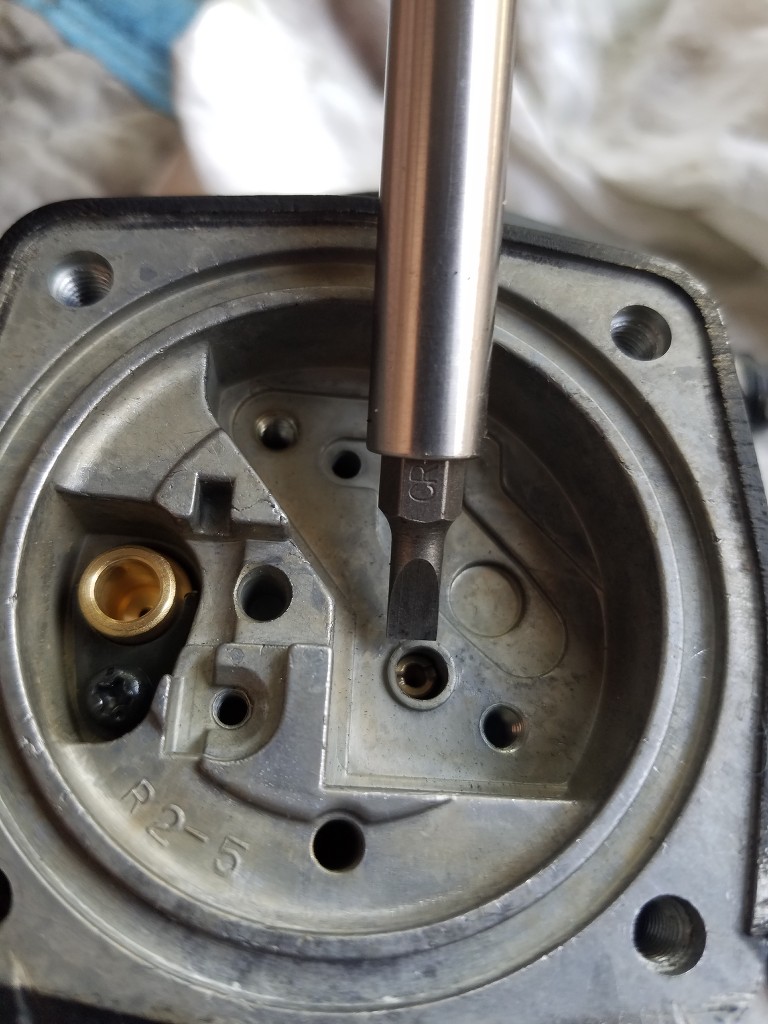
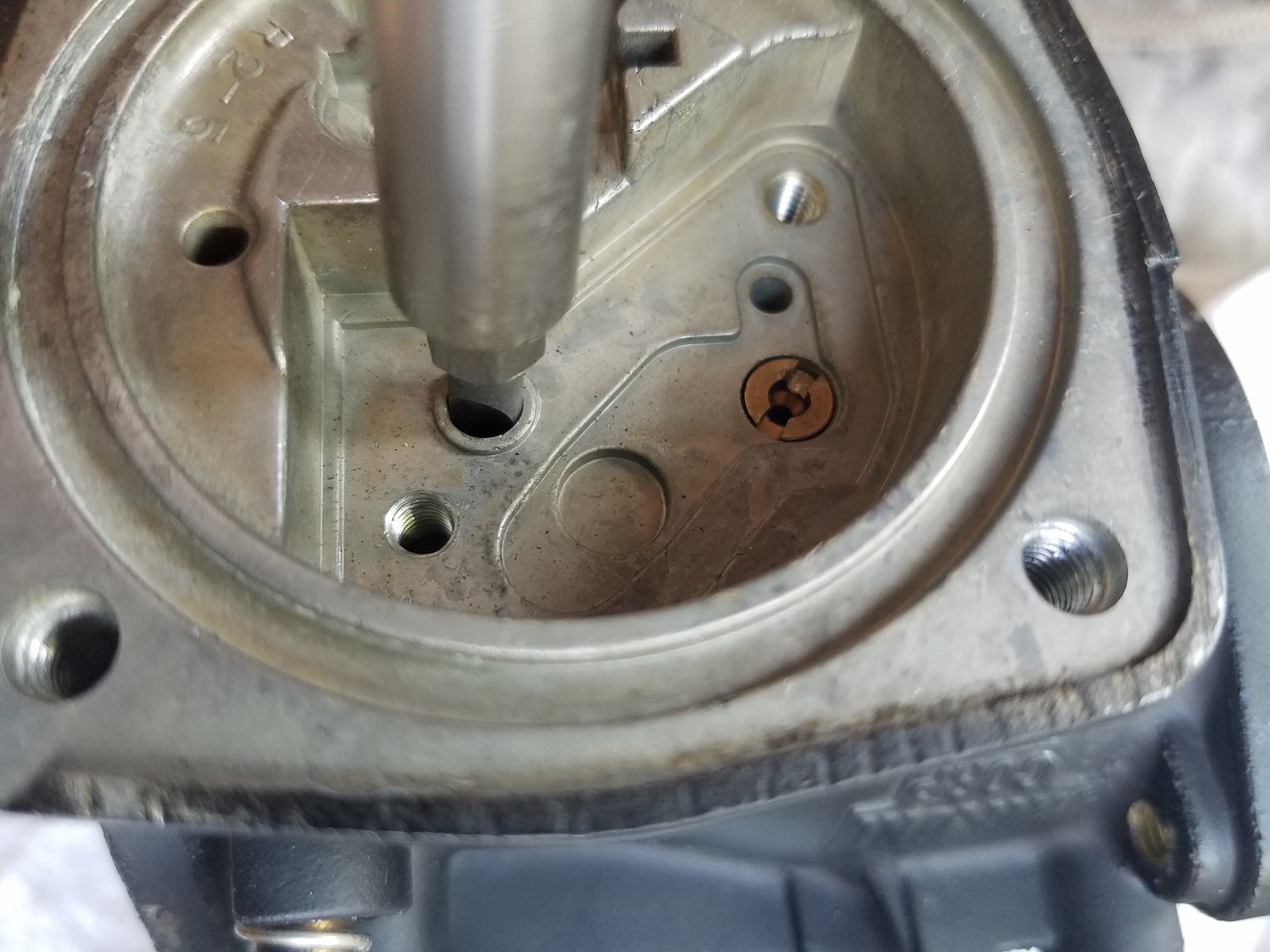
4.5mm flat tip insert was perfect for the small jet.
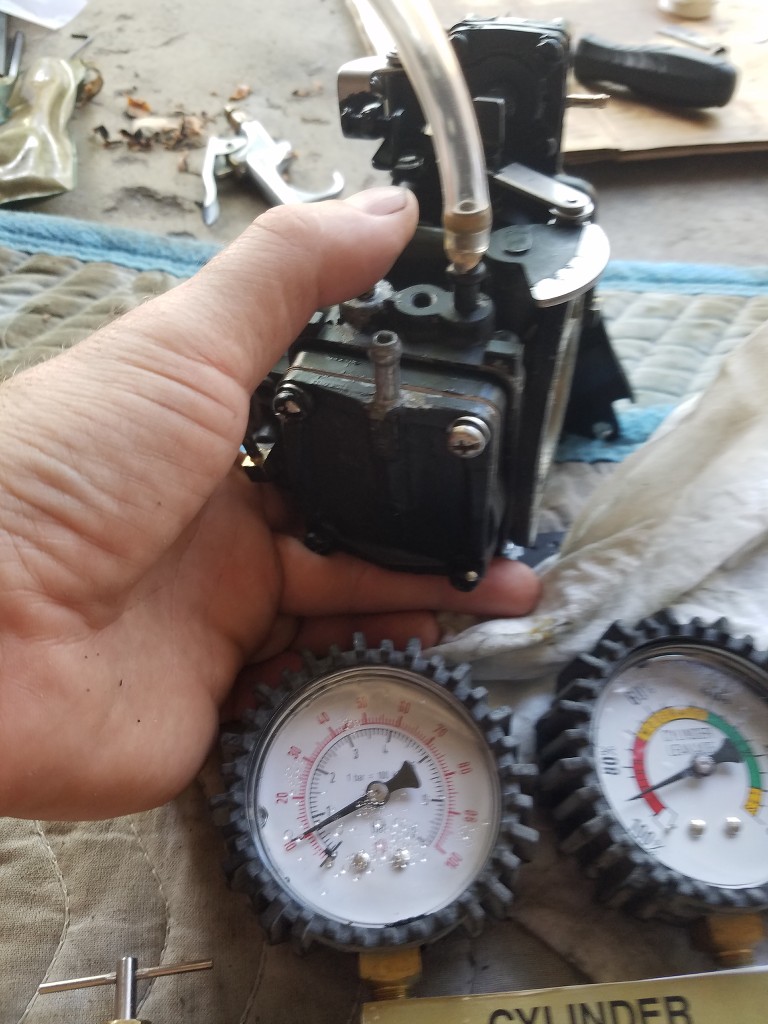
the 717 accelerator carbs do not have the same fuel inlets that 787 carburetors have. this is the port you need to hook the tester up to to check pop off pressure of this type of carb. the manual also states you need to hold 10 psi for...30 seconds? I don't remember the time value but its something like that.
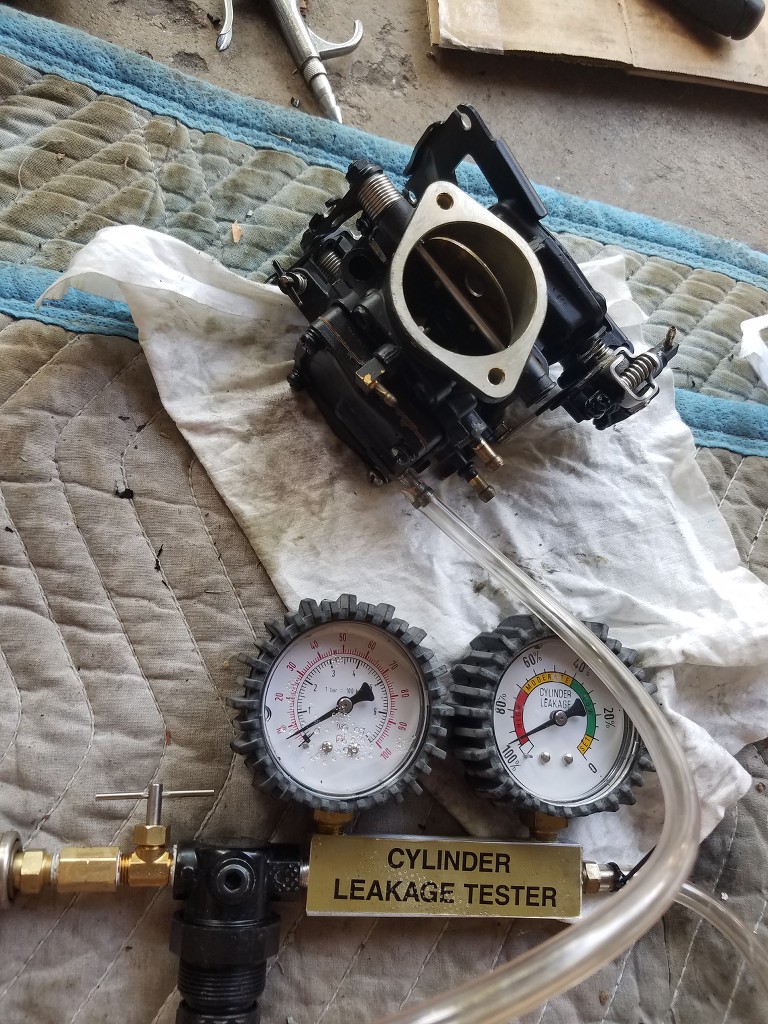
the manual also says to check the pulse port at 4 psi for a period of time.





